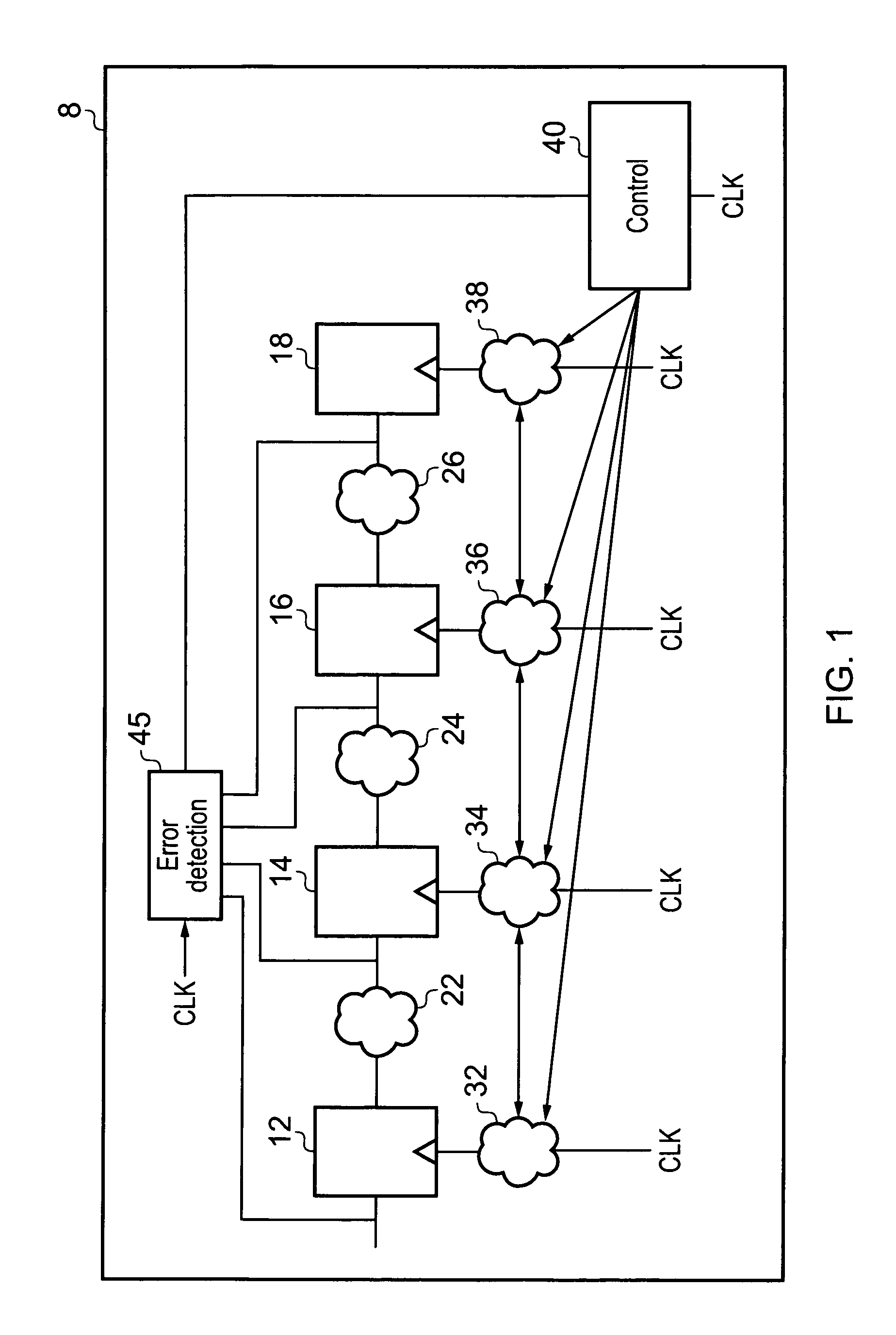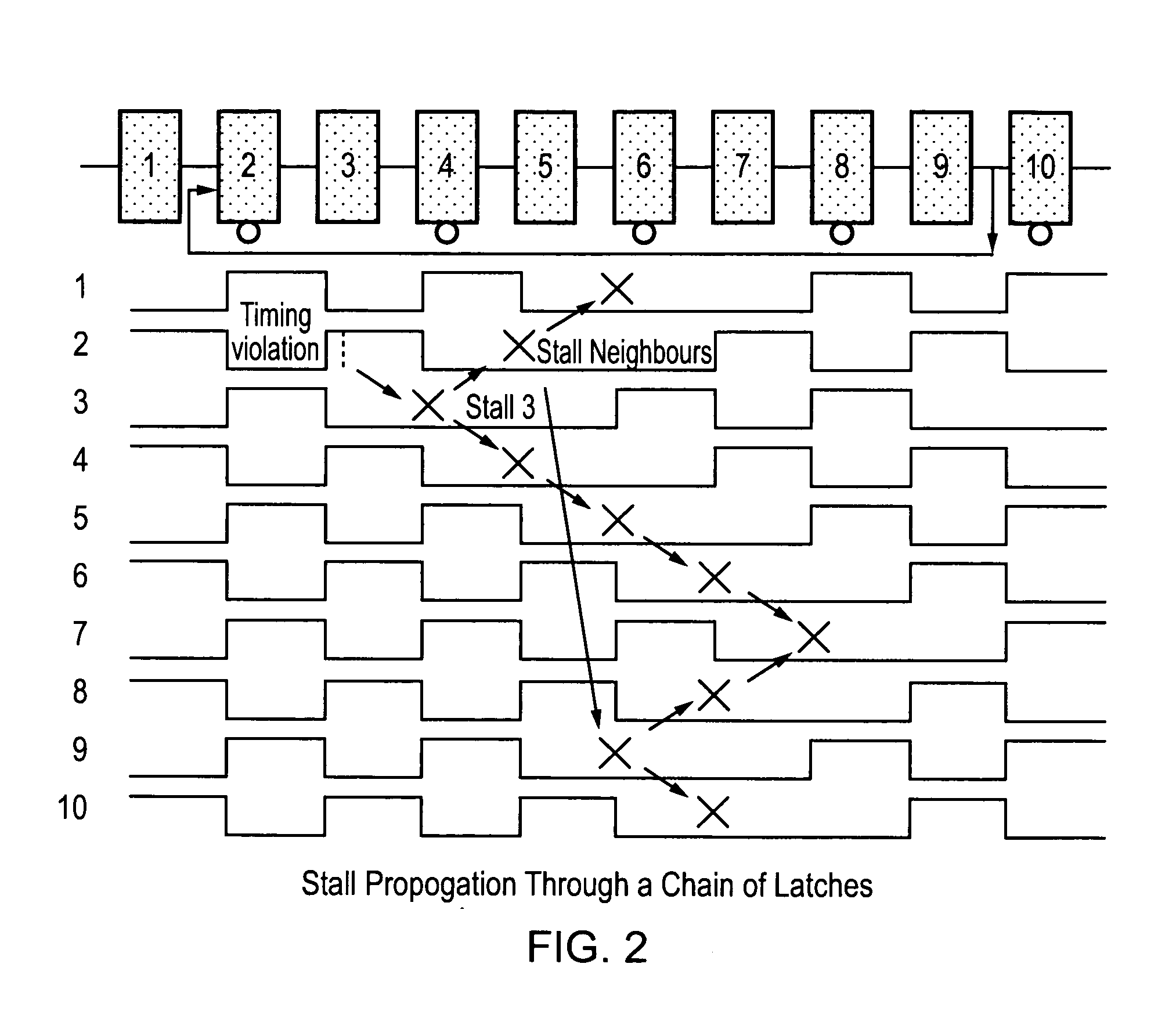Stalling synchronisation circuits in response to a late data signal
a synchronisation circuit and data signal technology, applied in the field of data processing, can solve problems such as being near impossible in a large system
- Summary
- Abstract
- Description
- Claims
- Application Information
AI Technical Summary
Benefits of technology
Problems solved by technology
Method used
Image
Examples
Embodiment Construction
[0058]FIG. 1 schematically shows a portion of a data processing apparatus 5 according to an embodiment of the present invention. Data processing apparatus 5 has several synchronisation elements 12, 14, 16 and 18 which in this example are latches arranged in series with combinational logic 22, 24, 26 between them. These synchronisation circuits and combinational logic form a portion of a data path within data processing apparatus 5. Data is passed from synchronisation element 12 through synchronisation element 14, 16 and 18 in response to a clock signal and processing is performed upon the data by combinational logic 22, 24 and 26. Thus, as in this example the synchronisation elements 12, 14, 16 and 18 are latches, during a first phase of a clock cycle latch 12 is open and data is received at its input and as it is a transparent latch the data value is retained within the latch during this phase of the clock cycle and is present at its output. Combinational logic 22 therefore process...
PUM
 Login to View More
Login to View More Abstract
Description
Claims
Application Information
 Login to View More
Login to View More - R&D
- Intellectual Property
- Life Sciences
- Materials
- Tech Scout
- Unparalleled Data Quality
- Higher Quality Content
- 60% Fewer Hallucinations
Browse by: Latest US Patents, China's latest patents, Technical Efficacy Thesaurus, Application Domain, Technology Topic, Popular Technical Reports.
© 2025 PatSnap. All rights reserved.Legal|Privacy policy|Modern Slavery Act Transparency Statement|Sitemap|About US| Contact US: help@patsnap.com



